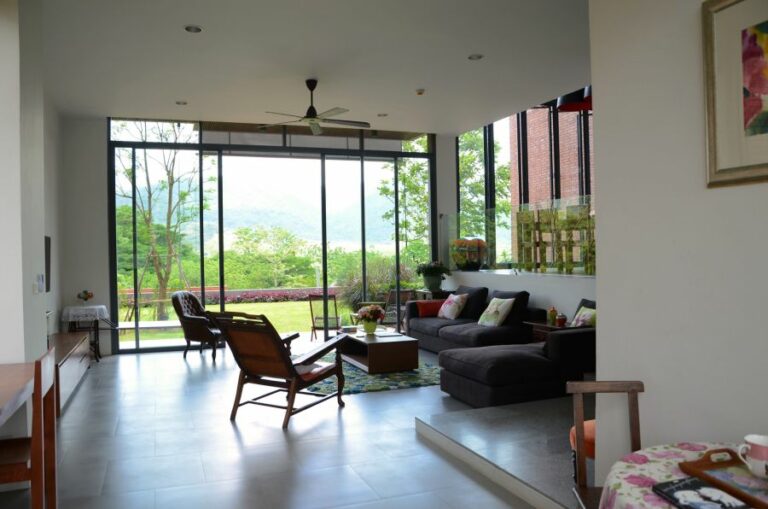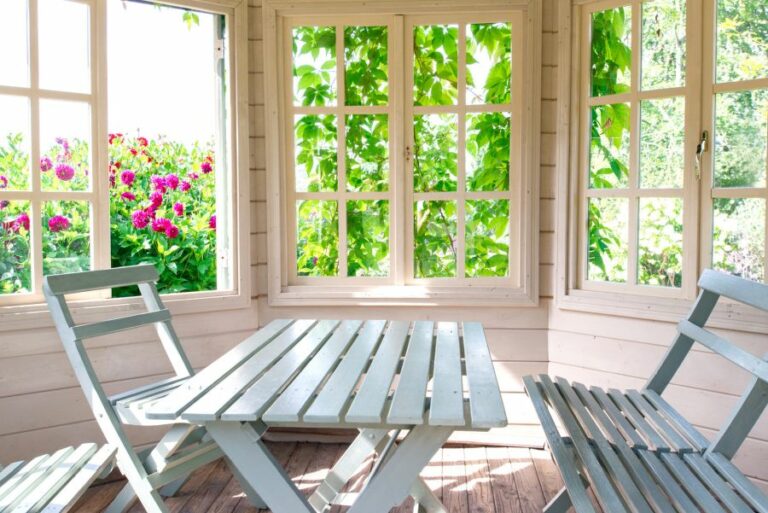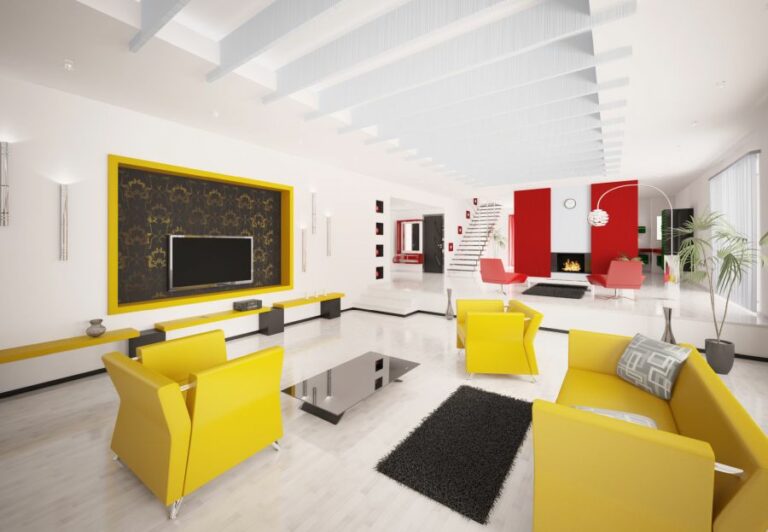Small Space Indoor Color Palettes, 25 Things You Should Know
Are you looking to give your cozy indoor space a fresh and vibrant look with a perfect color palette that complements its size? Look no further, as I’m here to provide expert guidance on choosing the ideal color scheme for your small indoor area. Combining design experience and knowledge of color psychology, I’m confident we can discover the perfect palette to enhance your space and make it feel inviting and stylish.
Small space indoor color palettes:
To create a visually appealing small indoor space, use light neutral colors like bright white, off-white, light gray, beige, or greige as the base. Add pops of color through accents like throw pillows, rugs, and artwork, limiting to two or three complementary colors. Incorporate patterns, textures, wood, and metallic tones for depth, and use mirrors to create the illusion of more space.

Discover how to transform your small indoor spaces with the perfect color palette! Keep reading as we delve into expert tips, trending shades, and foolproof strategies to make your humble abode feel spacious and stylish. Unleash your creativity, and let the color do the magic!
Contents
- 1 Compact Interior Color Schemes
- 2 Top Color Choices for Limited Spaces
- 3 Ideal Interior Shades for Petite Homes
- 4 Colors to Enhance a Tiny Room’s Appearance
- 5 Optimal Ceiling Colors for Smaller Spaces
Compact Interior Color Schemes
• Work with Light Neutrals
To make your small space feel larger and more open, using light neutral colors is a great option. These colors help bounce light around the room and give the illusion of more space. Some popular light neutral colors include:
- Bright white: For a crisp, clean look, bright white can make any space feel more open.
- Off-white: For a slightly warmer tone, off-white is a good choice.
- Light gray: Light grays give a modern and contemporary feel to a small space.
- Beige: Soft and warm, beige works well in cozy spaces.
- Greige: A blend of gray and beige, greige offers a balance between warm and cool tones.
Remember that paint colors can vary depending on the room’s lighting, so it’s a good idea to test out samples in your space before committing to a color.
• Add Pops of Color with Accents
In a small space, adding pops of color through accents can create visual interest and energy without overwhelming the room. Here are a few simple ways to incorporate color into your small indoor space:
- Throw pillows: Choose pillows in bold, coordinating colors for your sofa or chairs.
- Area rugs: Add a colorful area rug to your floors to define the space and add warmth.
- Artwork: Hang colorful artwork, like paintings, photographs, or textile wall hangings, that incorporate your accent colors.
- Lighting: Consider colorful lampshades or pendant lights to bring a playful touch to your space.
I recommend limiting your accent colors to two or three to keep the space from feeling too chaotic. Choose colors that complement each other and your neutral base for a cohesive look.
• Play with Patterns and Textures
Incorporating patterns and textures can add depth and visual interest to a small space without the need for multiple colors. Some ways to incorporate patterns and textures include:
- Wallpaper: If you’re not a fan of painting or want to add more visual interest, consider using wallpaper with a subtle pattern or texture.
- Textiles: Layering different textured fabrics, like linen, velvet, and cotton, can make your space feel more inviting.
- Furniture: Look for furniture with interesting patterns or textures, like a tufted headboard or a patterned accent chair.
- Tiles: Incorporate patterned tiles in your kitchen or bathroom backsplash for a creative touch.
Remember to choose patterns that work well with your chosen color palette, and don’t be afraid to mix and match for a unique look.
• Incorporate Wood and Metallic Tones
Natural wood and metallic tones can bring warmth and reflection to a small space. These materials work well with neutral and colorful schemes and can complement various styles, from rustic to modern.
- Wood: Wooden furniture, shelving, or flooring can add warmth to your small space. Natural wood tones work well in spaces with light neutral colors, while darker wood tones can create contrast.
- Metallic: Gold, silver, and bronze accents can add a touch of glamour to your space. Consider metallic light fixtures, hardware, or decorative items.
Be mindful of the amount of wood and metallic elements in your space, as too much of either material can make the room feel cluttered or visually heavy.
• Reflections and Mirrors
Another way to create the illusion of more space in a small indoor area is by using reflective surfaces and mirrors. Mirrors can make your space feel bigger by reflecting light and visually expanding the room.
Here are some ways to incorporate mirrors in your small space:
- Wall mirrors: Hang a large wall mirror or create a gallery wall with smaller mirrors.
- Floor mirrors: A full-length floor mirror can lean against a wall to create the illusion of depth.
- Furniture: Look for furniture pieces with mirrored surfaces, like a dresser or nightstand.
When choosing mirrors, keep in mind the other elements of your space, like your color palette and the style of your furniture. Choose frames that coordinate with your other design choices for a cohesive look.
• Conclusion
When it comes to designing a small indoor space, the right color palette can make a significant impact. By working with light neutral colors, incorporating pops of color, and using patterns and textures, you can create a visually appealing space that feels larger than it is.
Don’t forget about wood and metallic elements, as well as mirrors, to add warmth and depth to your design. With these tips in mind, your small space can feel beautifully cohesive and inviting.
For further inspiration, visit websites like Houzz or check out design resources from universities or schools, such as the NYU Department of Design and Construction, for expert tips and ideas on small space color palettes.
Top Color Choices for Limited Spaces
Small spaces can be challenging to decorate, but with the right color choices, you can create an environment that feels larger, brighter, and more inviting.
• Light Colors Make Spaces Feel Larger
It’s well-known in interior design that light colors make spaces feel larger. This is because light colors reflect more light, giving the illusion of a more open and spacious environment. Using light colors on your walls, furniture, and decor can help your small space feel larger and more inviting.
– Soft Neutrals
Soft neutrals are a great choice for small spaces because they create a calming atmosphere and serve as a versatile base for various design styles. Some popular soft neutrals to consider for your small space include:
- Off-white or cream
- Light gray
- Soft beige
- Pale taupe
Benjamin Moore, a renowned paint company, offers a wide range of neutral shades that are perfect for small spaces.
– Pastels
Pastel colors are another excellent option for small spaces. Pastels offer a subtle pop of color without being overwhelming, adding a touch of warmth and personality to your home. Some popular pastel colors for small spaces include:
- Soft pink
- Pale blue
- Light lavender
- Mint green
• Using Color Contrast for Depth
Creating a sense of depth is crucial in making a small space feel larger. One way to achieve this is through color contrast. By using light and dark colors together, you create visual interest and enhance the sense of depth in your space.
– Dark Accents
Incorporate dark colors sparingly and strategically as accents to create contrast. Doing so will help draw the eye around the room and create a more dynamic space. Here are some tips for using dark accents:
- Feature wall: Paint one wall a darker shade than the others. This will create depth in the room and can also serve as a focal point for your space.
- Furniture: Invest in furniture pieces with darker tones, such as a navy blue sofa or a dark wood coffee table. These pieces will contribute to the contrast without making the entire room feel dark.
- Accessories: Integrate dark colors through small accents such as pillows, rugs, or artwork to provide subtle contrast without overwhelming the space.
– Complementary Colors
Another way to incorporate contrast in your small space is by using complementary colors. Complementary colors are opposites on the color wheel and can make each other appear more vibrant when used together. A few examples of complementary color pairs are:
- Blue and orange
- Yellow and purple
- Red and green
Incorporate these colors through accessories, textiles, or artwork to create contrast and depth in your small space.
• Tips for Choosing the Best Colors for Your Small Space
Here are some additional tips for finding the best color combinations for your small space:
- Consider the room’s purpose: When choosing colors, keep in mind the room’s purpose and the atmosphere you want to create. For example, if you want your bedroom to be a relaxing retreat, choose calming colors like soft neutrals or pastels.
- Draw inspiration from nature: To make your space feel fresh and inviting, consider using colors inspired by nature. Soft greens, pale blues, and warm yellows can make your small space feel more connected to the outdoors.
- Analyze the natural light: The amount and direction of natural light in your space will impact how colors appear on your walls. Take note of how light changes throughout the day, and use sample swatches to help you choose the best colors for the room.
- Use paint samples: Before committing to a color, test it out by painting a small section of your wall. Observe how the color changes throughout the day and under different lighting conditions to ensure it’s the right choice for your space.
• Conclusion
In summary, the best colors for small spaces are light and bright, with just enough contrast to provide visual interest and depth. Soft neutrals, pastels, and strategic use of dark accents all contribute to creating a larger and more inviting atmosphere in your home.
Remember to consider the room’s purpose, draw inspiration from nature, and test out paint samples before making your final decision.
Color | Reason |
|---|---|
White | Creates a sense of space and cleanliness |
Light gray | Neutral and versatile, giving the illusion of more space |
Soft pastels | Creates a calming atmosphere and enhances the feeling of spaciousness |
Blue | Light shades provide a sense of open airiness and tranquility |
Green | Pale shades evoke feelings of nature and can make a small space appear larger |
Ideal Interior Shades for Petite Homes
Are you thinking of giving your small house a fresh look? Choosing the right colors can make all the difference. Interior paint colors play a crucial role in defining the aesthetic and atmosphere of your home.
• Light Colors to Create an Illusion of Space
Light colors are ideal for small houses, as they create a feeling of openness and can make a tiny room appear larger. When selecting a light color scheme, consider the following options:
– White
White is a timeless color that offers countless possibilities. Its clean and crisp appearance helps minimize any sense of clutter or chaos in small spaces. One might consider a Pure White shade or an Off-White variation to suit different styles and preferences.
– Soft Grays
Gray shades are highly versatile and can serve as a neutral backdrop to a variety of decor styles. Light gray shades, such as Repose Gray and Agreeable Gray, work well in small spaces and can be effortlessly complemented by bolder accessories.
– Light Blues
Light shades of blue impart a sense of calmness and serenity to interiors. Special hues such as Heavenly Blue or Iceberg can be ideal for small bedrooms or bathrooms, creating a relaxing atmosphere.
– Pale Greens
Soft green shades signify freshness and tranquility. When used in small spaces, they can enhance one’s connection with nature. Consider painting an accent wall with Soft Fern or Misty Air to bring life into your small house.
• Accent Colors for Visual Interest
While light colors are the go-to choice for small houses, incorporating accent colors can add character and depth to your interiors. Strategically placed pops of color will not only add visual interest but also help create a cohesive color palette.
– Deep Blues
Dark blue shades, like Hale Navy or Newburyport Blue, can make a striking statement when used as accent colors in small spaces. Incorporate these deep blues by painting an alcove or a singular wall to create a sense of depth.
– Bold Yellows
Surprisingly, bold yellows, like Sunshine or Yellow Marigold, can be used sparingly to bring energy and vibrancy to small rooms. Use this shade in the form of a statement furniture piece or artwork.
– Rich Reds or Oranges
Vibrant oranges and reds, like Adobe Orange and Caliente, can provide a dynamic edge to small spaces when used thoughtfully without overcrowding the visual plane.
• Tips for Choosing the Perfect Paint Finish
Aside from selecting the best color for your small house, choosing the right paint finish is also essential. Various factors come into play, such as paint durability, sheen, and overall look. Here are a few guidelines to follow:
- For high-traffic areas or spaces prone to moisture and humidity, like kitchens and bathrooms, opt for semi-gloss or satin finishes as they are more resistant to moisture and stains.
- When seeking to conceal minor surface imperfections, choose matte or flat paint finishes, which offer excellent coverage and a non-reflective surface.
Finally, when selecting the best interior colors for your small house, consider your existing decor and personal preferences. As research from the University of Texas has shown, an individual’s emotional well-being can be significantly impacted by the color of their living space.
By thoughtfully combining light colors, accent hues, and the right paint finishes, you will create a harmonious and inviting environment in your small house.
Color | Description |
|---|---|
White | Creates an open, airy atmosphere and makes the room feel larger. |
Light Gray | Creates a neutral background and helps to visually expand the space. |
Soft Pastels | Add a touch of color while keeping the room bright and spacious. |
Light Beige | Offers a warmer alternative to white without overwhelming the space. |
Soft Blue | Creates a calming atmosphere and pairs well with a variety of other colors. |
Muted Green | Provides a hint of nature and creates a relaxing, tranquil environment. |
Colors to Enhance a Tiny Room’s Appearance
A well-chosen color scheme can enhance the overall appearance of a small room and make it look more spacious than it actually is. Selecting lighter shades creates the illusion of a larger space while maintaining its charm and functionality.
• Light Colors Create an Illusion of Space
The choice of light colors for walls and ceilings can make a significant difference in the perception of a room’s size. Light colors reflect light, making it bounce across the room, while darker shades tend to absorb light. This difference in light reflection can have a considerable impact on the space’s ambiance.
Choosing light colors is a straightforward strategy to make the most out of a small room.
– Using White to Create Spaciousness
White is often the go-to option for creating a sense of spaciousness in a room. The color reflects natural light and complements most design schemes. Additionally, white is incredibly versatile and can be easily combined with other colors to add warmth and character to any space.
– Soft, Neutral Colors
Neutral shades such as beige, light gray, or cream can create a clean, elegant look in small rooms. These colors reflect light effectively and pair well with other colors and finishes, offering a variety of design possibilities.
– Pastel Colors
Choosing pastel colors like pale blues, soft pinks, mint greens, and pale yellows can add a touch of freshness and brightness to your small space. These colors are not only visually appealing but also help in creating an atmosphere of tranquility and calmness.
• More Color Tips for Smaller Rooms
Beyond choosing a lighter color palette, implementing the following tips can further contribute to the illusion of space in small rooms.
– Use Monochromatic Colors
Sticking to a monochromatic color scheme involves using different shades of a single color throughout the room. The visual consistency created by this approach can make the space appear larger and uncluttered.
– Add Pops of Color
While utilizing lighter shades in a room to create a sense of space, adding small pops of color can provide extra depth and visual interest. Incorporate colorful accents in the form of cushions, artwork, or decorative objects to make the room feel more inviting and lively.
– Employ Color Continuity
Achieving color continuity by extending wall colors onto the ceiling has proven effective in making small rooms look more spacious. This continuity prevents the eye from stopping at the point where the wall and ceiling meet, perceiving the ceiling to be higher and the room larger.
• Important Design Elements to Consider
Alongside the choice of color, other design factors can greatly influence the perceived size of small spaces.
– Lighting
Proper lighting is essential in making small rooms look more spacious. It’s recommended to maximize natural light by using sheer window treatments and arranging furniture in a way that doesn’t block light sources.
– Mirrors
Incorporating mirrors in the room’s design helps reflect light and create an illusion of space. Placing a mirror on the opposite side of a light source can make the room seem larger and brighter.
– Declutter
It’s important to keep a small room free of clutter. Organizing and storing items efficiently can give the room an open, airy, and spacious feel.
– Furniture Selection
Opt for multifunctional furniture and pieces with slim profiles to avoid overcrowding the room. This helps maintain clean, open sightlines and a sense of openness in the small space.
In conclusion, the right choice of colors combined with smart design strategies can make a significant difference in making your small room appear bigger, brighter, and more appealing. Light colors, whether they are white, soft neutrals, or pastel shades, are key elements in creating an illusion of space.
These colors, along with effective lighting, smart furniture choices, and decluttering, can significantly transform a small room into a spacious, inviting, and functional space.
Optimal Ceiling Colors for Smaller Spaces
Painting the ceilings in small rooms can be a tricky task, as the wrong choice of color might make the room feel cramped and claustrophobic. However, with the right selection of shades, you can create an illusion of larger space and transform the overall appearance of the room.
• Light Colors for Higher Ceilings
For small rooms, light colors are generally recommended because they can make the space look and feel larger. Lighter shades, such as white, off-white, or light gray, reflect more light into the room, creating an airy and open atmosphere.
These colors can also help to create the illusion of a higher ceiling, which can be especially important in rooms with a low ceiling height.
According to research conducted by the University of Illinois, lighter colors help in reflecting more light, making small spaces appear more spacious. If you want a safe and timeless option, white is always a classic choice that can create an open and clean look.
• Using Variations of Wall Color
Choosing a color that is a few shades lighter than the wall color can also create a seamless and unified look in the room.
By using a slightly lighter shade for the ceiling, you can create a subtle contrast between the walls and the ceiling. This can make the ceiling appear higher, and the room feel more spacious.
It’s a good idea to avoid using bold or dark colors on the ceiling, as this can make the room feel smaller and more closed in. If you’re set on using a bold color on the walls of the small room, it’s best to keep the ceiling light to prevent the room from feeling claustrophobic.
• Experiment with Warmer Subtleties
You might also consider incorporating warmer tones such as soft peach, cream, or pastel yellow. These colors can create a cozy and inviting atmosphere while still maintaining a sense of spaciousness.
Warmer tones can also help balance out rooms with less natural light or north-facing windows, where cooler, blue-toned light is more common.
By understanding the effects of different colors on our perception, you can make an informed choice to find the right color for your small room ceiling. In general, sticking to lighter and warmer shades can help make the space feel larger and more inviting.
• Consider the Overall Room Design
When choosing a ceiling color, it’s important to take the room’s overall design and style into consideration. The ceiling color should complement the walls, floors, and furnishings to create a cohesive and harmonious space.
Make sure the color you choose complements the overall aesthetic of the room and doesn’t clash with other design elements.
For example, a white ceiling will work well with both minimalist and colorful interiors, while a pastel-colored ceiling can add an element of depth and interest to a more neutral space.
If you have decorative moldings or other architectural features on the ceiling, you can add a sense of depth by using a slightly darker color for the moldings. This technique called “shadowing,” can create an eye-catching contrast while still maintaining a sense of spaciousness in the room.
• Utilize Sheen Effectively
When selecting the paint itself, pay attention to the paint’s sheen, as it can also affect the perception of the room’s size. A paint’s sheen, or the amount of light it reflects, can make a significant difference in how the paint color appears on the ceiling.
For small rooms, a flat or matte finish is typically recommended because it absorbs light and can minimize the appearance of any imperfections on the ceiling surface.
A satin or semi-gloss finish, on the other hand, can reflect light and may create an undesirable glare or highlight surface imperfections, which could make the room feel smaller.
In conclusion, when painting the ceiling of a small room, it is generally best to stick to light and neutral colors that can create a feeling of openness and spaciousness.
By choosing a color that complements the walls, floors, and furnishings, you can achieve a cohesive and harmonious design that enhances the room’s overall aesthetics. Keep these tips in mind as you explore various colors and finishes to find the perfect ceiling color for your small room.







